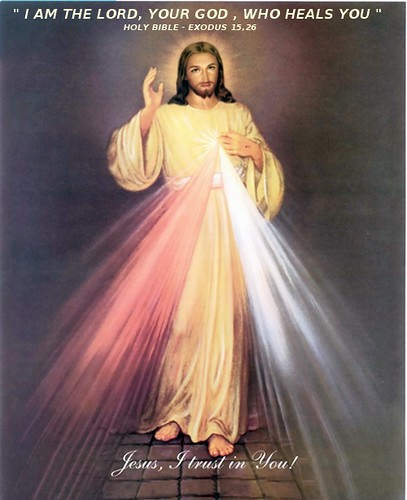Unlocking Messianic Secrets: Exploring Numbers Chapter 8s Connection to Jesus and the Gospel
This article explores the messianic, prophetic, and symbolic connections between Numbers chapter 8 and Jesus and the gospel, providing theological and scholarly perspectives, practical applications for believers, and addressing historical and theological controversies.
Background of the Book of Numbers
The Book of Numbers, traditionally attributed to Moses and estimated to be written between 1440 and 1400 B.C., holds universal and timeless significance, emphasizing spiritual warfare and preparation for entering the Promised Land [1]. This ancient biblical text chronicles the experiences of the Israelites in the wilderness, providing valuable insights into their journey, challenges, and the divine guidance they received. As believers delve into the historical and spiritual landscape depicted in the Book of Numbers, they are confronted with foundational principles and timeless wisdom that continue to resonate across generations. The significance of key verses such as Numbers 6:24-26, 12:6-8, and 14:30-34 cannot be overstated, as they encapsulate the spiritual struggles, triumphs, and the overarching theme of obedience, rebellion, repentance, and blessing [1].
The foreshadowings of the promised Messiah, Christ’s sacrifice, and Balaam’s prophecy of Christ within the Book of Numbers reveal its profound prophetic significance. These elements contribute to a deeper understanding of the divine plan and the role of Jesus in the redemption of humanity, establishing a strong connection between the events in Numbers and the overarching narrative of the Gospel.
Messianic and Prophetic Significance in Numbers Chapter 8
The eighth chapter of Numbers provides a rich tapestry of messianic and prophetic significance. One key verse in this chapter is Numbers 8:16, which describes the Levites as being given to God as Israel’s firstborn. This concept of the Levites as Israel’s firstborn given to God holds profound messianic implications, as it foreshadows the role of Jesus Christ as the ultimate firstborn Son of God, who was also dedicated to God for the redemption of humanity.
Moreover, the ceremonial cleansing of the Levites and their dedication as outlined in Numbers chapter 8 is laden with symbolism connected to the redemptive work of Jesus Christ. The Levites’ purification process, which involved being sprinkled with water of purification and shaved, serves as a foreshadowing of the spiritual cleansing and consecration that believers experience through the atoning sacrifice of Jesus. Just as the Levites were set apart for God’s glory and service to the priests, the believers are also set apart for the divine purpose and service through the redemptive work of Jesus Christ.
The prophetic implications of Numbers chapter 8 are further magnified when considering the lampstand, which was a central element of the tabernacle. The lampstand, made of hammered gold with its lamps arranged to face the front, symbolizes the illumination of God’s truth and the revelation of His glory. In the New Testament, Jesus identifies Himself as the light of the world, drawing a direct symbolic connection to the lampstand in Numbers chapter 8. This correlation underscores the messianic and prophetic significance of the lampstand, portraying Jesus as the ultimate source of divine illumination and revelation.
For instance, the ceremonial cleansing and dedication of the Levites in Numbers chapter 8 can be seen as a reflection of the spiritual purification and consecration depicted in the ministry of Jesus. In the Old Testament, the Levites were set apart for the service of God through a process of cleansing, dedication, and consecration. This symbolic act prefigures the transformative power of Jesus’ redemptive work in the lives of believers, as He purifies and sanctifies them for His service.
Furthermore, the lampstand in Numbers chapter 8, made of pure gold and designed to illuminate the tabernacle, symbolizes the light of God’s presence. This imagery finds resonance in the teachings of Jesus, who referred to Himself as the “light of the world”. Just as the lampstand illuminated the tabernacle, Jesus brings illumination, truth, and spiritual enlightenment to humanity. The symbolism of the lampstand underscores the centrality of Jesus in dispelling spiritual darkness and guiding believers to walk in the light of God’s truth and grace.
Moreover, the concept of the Levites taking the place of the firstborn Israelites also holds symbolic significance in relation to Jesus and the gospel. This substitutionary role of the Levites echoes the redemptive narrative of Jesus, who, as the ultimate sacrificial Lamb, took the place of humanity, offering Himself as a substitute for the sins of the world. This connection underscores the foreshadowing of Jesus’ atoning sacrifice and His role as the fulfillment of Old Testament prophecies, emphasizing the redemptive purpose of His life, death, and resurrection.
#MessianicConnections #PropheticRevelations #NumbersChapter8 #BiblicalSymbolism #NewTestamentLinks #DivineConnections #MessianicProphecies #BiblicalRevelation #PropheticVisions #ScripturalInterpretation #HeavenlySanctuary #RedemptiveHistory #ChristianTheology #SpiritualGrowth #Evangelism #OldTestamentProphecies #ChristianWorship #BiblicalReflection #DivinePromises #GospelApplication
Symbolic Connections to Jesus and the Gospel
The symbolic connections between Numbers chapter 8 and the life and teachings of Jesus in the gospel encompass various aspects that reveal profound spiritual parallels. For instance, the ceremonial cleansing and dedication of the Levites in Numbers chapter 8 can be seen as a reflection of the spiritual purification and consecration depicted in the ministry of Jesus. In the Old Testament, the Levites were set apart for the service of God through a process of cleansing, dedication, and consecration. This symbolic act prefigures the transformative power of Jesus’ redemptive work in the lives of believers, as He purifies and sanctifies them for His service through His atoning sacrifice.
Furthermore, the lampstand in Numbers chapter 8, made of pure gold and designed to illuminate the tabernacle, symbolizes the light of God’s presence. This imagery finds resonance in the teachings of Jesus, who referred to Himself as the “light of the world”. Just as the lampstand illuminated the tabernacle, Jesus brings illumination, truth, and spiritual enlightenment to humanity. The symbolism of the lampstand underscores the centrality of Jesus in dispelling spiritual darkness and guiding believers to walk in the light of God’s truth and grace.
Moreover, the concept of the Levites taking the place of the firstborn Israelites also holds symbolic significance in relation to Jesus and the gospel. This substitutionary role of the Levites echoes the redemptive narrative of Jesus, who, as the ultimate sacrificial Lamb, took the place of humanity, offering Himself as a substitute for the sins of the world. This connection underscores the foreshadowing of Jesus’ atoning sacrifice and His role as the fulfillment of Old Testament prophecies, emphasizing the redemptive purpose of His life, death, and resurrection.
Theological and Scholarly Perspectives on Messianic Connections
When considering the messianic and prophetic connections in Numbers chapter 8, scholars and theologians have provided a variety of interpretations that shed light on the theological significance of these connections. For instance, some scholars emphasize the symbolic significance of the lampstand and the ceremonial cleansing of the Levites as foreshadowing the redemptive work of the promised Messiah. They argue that just as the Levites were set apart for God’s glory and service through ceremonial cleansing, Jesus, as the ultimate High Priest, sanctifies and dedicates believers for His service through His redemptive work.
Furthermore, theologians have highlighted the concept of the Levites being regarded as Israel’s firstborn given to God in Numbers chapter 8. This notion holds significant theological implications, as it underscores the special consecration and dedication of the Levites to serve God in the tabernacle. Some scholars draw parallels between this consecration and the role of Jesus as the firstborn over all creation. They argue that Jesus’ sacrificial work and the establishment of a new covenant resonate with the consecrated status of the Levites, signifying a deeper prophetic and messianic connection within the Old Testament narrative.
In addition, comparative analyses between Christian and Jewish perspectives on messianic prophecies have contributed to the scholarly discourse surrounding Numbers chapter 8. This comparative approach has provided valuable insights into the divergent interpretations of the Old Testament texts and their perceived connections to the promised Messiah. The theological and scholarly perspectives on messianic connections offer a rich tapestry of interpretations that continue to inspire and inform believers’ understanding of the profound significance of Numbers chapter 8 in relation to the messianic and prophetic aspects.
Moreover, the lampstand, a prominent element in Numbers chapter 8, symbolizes the light of God shining in the darkness. The lampstand, made of hammered gold with its lamps arranged to face the front, illuminates the significance of Christ as the Light of the World, bringing spiritual illumination and guidance to humanity. This symbolic representation underscores the prophetic connections between Numbers chapter 8 and the life and teachings of Jesus in the gospel, reinforcing the theological depth and richness of the scriptural narrative. The lampstand’s purpose to make the light more visible parallels Jesus’ teachings about believers being the light of the world, further accentuating the symbolic significance of Numbers chapter 8 in relation to the messianic and prophetic aspects of Jesus’ mission.
Practical Application for Believers
The analysis of Numbers chapter 8 in relation to messianic prophecies offers significant practical applications for believers in the contemporary context. By examining the experiences of the Israelites in the wilderness and their journey of sin, repentance, and restoration, believers can draw valuable lessons that provide a deeper understanding of the redemptive narrative and its implications for their spiritual walk and relationship with God.
One practical application derives from the ceremonial cleansing of the Levites and their dedication as a representation of prophetic connections. This underscores the importance of consecration and purity in the service of God, serving as a reminder for believers to pursue holiness and dedication in their lives. Furthermore, the process of cleansing and dedication symbolizes the believer’s ongoing journey of sanctification, emphasizing the need for spiritual purification and commitment to God’s work.
Additionally, the experiences of the Israelites in the wilderness serve as a cautionary tale for believers, highlighting the consequences of sin and unbelief, and the subsequent restoration after repentance and return to God. This provides a practical framework for believers to observe and avoid the mistakes of disobedience and rebellion, while also encouraging them to embrace repentance and seek restoration in their relationship with God. These valuable lessons from Numbers chapter 8 serve as a guide for believers in navigating their spiritual journey and living a life that reflects the redemptive message of the gospel.
In addition to its historical and narrative value, the Book of Numbers serves as a spiritual guide, offering timeless principles and insights for believers navigating their own spiritual journey. The experiences of the Israelites in the wilderness hold valuable lessons applicable to contemporary believers, emphasizing the consequences of disobedience, the blessings of repentance, and the unwavering faithfulness of God. Therefore, the Book of Numbers stands as a testament to the enduring relevance of its themes and teachings, providing a solid foundation for understanding the messianic, prophetic, and symbolic connections to Jesus and the gospel.
Revelation of the Heavenly Sanctuary and Prophetic Appointments
The heavenly sanctuary and the prophetic appointments revealed in Numbers chapter 8 offer a glimpse into the intricate tapestry of messianic and prophetic aspects. This revelation provides profound insights into the divine orchestration of redemptive history, shedding light on the interconnectedness of Old Testament prophecies and their fulfillment in the life and mission of Jesus. For instance, the 2,300-year and 490-year prophecies, as highlighted in the Book of Daniel, are significant in understanding the timeline and unfolding of specific events related to Jesus’ life and ministry. The connection between these prophetic time periods and the earthly ministry of Jesus adds depth to the understanding of God’s precise plan for the salvation of humanity.
Furthermore, the heavenly sanctuary serves as a symbolic representation of the ultimate fulfillment of the messianic and prophetic promises. The intricate details of the sanctuary’s construction, including the layout, the furniture, and the priestly duties, point to the perfection and completion found in Jesus Christ. For instance, the role of the high priest in the Old Testament, particularly in performing the Day of Atonement rituals, finds its ultimate fulfillment in Jesus as the eternal High Priest who offered Himself as the perfect sacrifice for the atonement of sins. This connection between the sanctuary and Jesus’ redemptive work underscores the seamless continuity between the Old Testament foreshadowings and their realization in the New Testament, solidifying the prophetic and messianic significance of Numbers chapter 8 in the broader narrative of Scripture.
The 2,300-year and 490-year prophecies revealed in the Book of Daniel offer a compelling insight into the precise timing and fulfillment of messianic and prophetic promises. These prophecies, which point to specific events and periods related to the life and ministry of Jesus, serve as a testament to the divine precision and orchestration of redemptive history. For instance, the starting event for the 2,300-year and 490-year prophecies was a decree from Persian King Artaxerxes authorizing God’s people to return to Jerusalem and rebuild the city in 457 BC. This decree set in motion a series of events that culminated in the fulfillment of these prophecies through the life, death, and resurrection of Jesus Christ.
Moreover, the heavenly sanctuary and its prophetic appointments underscore the meticulous planning and fulfillment of God’s redemptive plan. The heavenly day of atonement, or at-one-ment, will bring all the universe into complete harmony with God. It includes Jesus sacrificing His life to pay our death penalty, freeing us from the guilt of sin, changing us and making us completely new persons, restoring us to God’s image, and more. This revelation of the heavenly sanctuary and the prophetic appointments in Numbers chapter 8 serves as a testament to the divine precision and fulfillment of God’s redemptive promises, highlighting the profound messianic and prophetic connections embedded within the Old Testament narrative.
Historical and Theological Controversies
The interpretation of messianic prophecies in Numbers chapter 8 has been a subject of historical and theological controversies, shedding light on the complexities and diverse perspectives regarding the fulfillment of Old Testament predictions in the life of Jesus. One of the key controversies revolves around the differing interpretations of specific Old Testament passages as messianic prophecies. For instance, Christians have often pointed to passages in Isaiah as messianic prophecies, including the prophecy of a virgin giving birth. However, many Jewish scholars argue that these passages were not traditionally understood as messianic in pre-Christian Jewish tradition. This divergence in interpretation has been a focal point of debate, with Christians and Jews presenting contrasting views on the messianic nature of these Old Testament texts.
Another area of controversy lies in the historical accounts of Jesus’ life and teachings in the Gospels. Skeptics have raised concerns about the historical accuracy of events such as the birth of Jesus in Bethlehem, which is often regarded as fulfilling a messianic prophecy. The inconsistencies in the Gospel accounts of this event have been a point of contention, with some scholars suggesting that the Gospel writers may have shaped their narratives to align with Old Testament prophecies, thereby raising questions about the historical reliability of these accounts.
Furthermore, the rejection of Jesus as the messiah by the majority of Jews has been a significant point of contention. The crucifixion of Jesus, which goes against the traditional understanding of what the messiah would do, has been a stumbling block for many within the Jewish community. This rejection has fueled ongoing debates and disagreements between Christians and Jews regarding the messianic claims made about Jesus in light of Old Testament prophecies. Addressing these historical and theological controversies is essential for a nuanced understanding of the messianic and prophetic aspects of Jesus’ life and their implications for both Christian and Jewish theological perspectives.
Comparative Analysis with Other Messianic Prophecies
When comparing messianic prophecies from other Old Testament books with the events in Numbers chapter 8, it becomes evident that there is a consistent and interconnected narrative that points to the fulfillment of these prophecies in the person of Jesus Christ. For instance, in Isaiah 53, the prophecy of the suffering servant aligns with the sacrificial imagery found in the ceremonial cleansing of the Levites in Numbers chapter 8. The concept of the suffering servant as the Messiah, who would bear the iniquities of others, resonates with the symbolic atonement and dedication of the Levites for the benefit of the priests and the entire congregation of Israel.
Additionally, the Messianic prophecy in Micah 5:2, foretelling the birth of the ruler in Bethlehem, parallels the symbolism of divine appointments and the heavenly sanctuary revealed in Numbers chapter 8. This connection emphasizes the significance of the promised Messiah’s birthplace and mission, underscoring the divine orchestration of events throughout Scripture that find their ultimate fulfillment in Jesus Christ.
Moreover, the prophetic references to the anointed one in the Psalms, particularly in Psalm 110, illustrate the priestly and kingly roles of the Messiah. This aligns with the significance of the Levites as Israel’s firstborn given to God in Numbers chapter 8, emphasizing the priestly consecration and service that foreshadow the redemptive ministry of Jesus as the ultimate high priest and king. These comparisons underscore the cohesive nature of messianic prophecies across the Old Testament and their fulfillment in the life, death, and resurrection of Jesus Christ in the gospel accounts.
This interconnectedness of messianic prophecies from different Old Testament books with the events in Numbers chapter 8 serves as a testament to the divine inspiration and continuity of God’s redemptive plan, reinforcing the foundational significance of Jesus as the promised Messiah and the fulfillment of God’s covenant with His people.
Application of Messianic and Prophetic Themes in Modern Christianity
The application of messianic and prophetic themes from Numbers chapter 8 in modern Christian theology and teaching underscores their enduring relevance in contemporary worship, preaching, and spiritual practices. These themes serve as foundational pillars, illuminating the redemptive narrative and its transformative impact on the lives of believers, fostering a deeper appreciation of the gospel message.
Furthermore, modern Christianity draws upon the messianic and prophetic themes in Numbers chapter 8 to emphasize the continuity of God’s redemptive plan throughout history. By incorporating these themes into sermons, Bible studies, and theological discourse, contemporary believers are reminded of the unchanging nature of God’s promises and the fulfillment of His prophetic declarations in the person of Jesus Christ. For instance, the ceremonial cleansing of the Levites in Numbers chapter 8 can be paralleled with the concept of spiritual purification and consecration in contemporary Christian teachings, highlighting the ongoing relevance of these ancient practices in shaping believers’ spiritual journeys.
Moreover, the prophetic connections in Numbers chapter 8 are often used to illustrate the significance of Jesus as the ultimate fulfillment of Old Testament prophecies. By exploring the symbolic parallels between the Levitical rituals and the redemptive work of Christ, modern Christian theology emphasizes the continuity and coherence of God’s plan of salvation, reinforcing the foundational teachings of the gospel and the identity of Jesus as the long-awaited Messiah. These themes not only provide theological depth to Christian teachings but also offer practical guidance for believers



